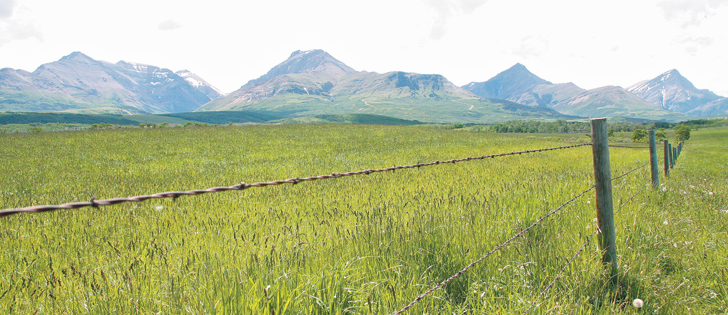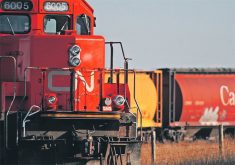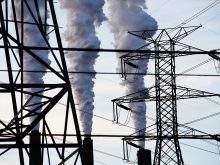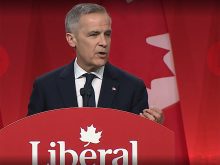Farmers with the goal of sequestering maximum carbon in their soil would plant alfalfa or canola.
That was the quick answer to the “best crops to keep carbon” question from Agriculture Canada researcher Brian McConkey.
Alfalfa is a nitrogen fixer that puts lots of resources into its roots, keeps the soil dry so it reduces decomposition and does that job even in degraded soils.
The end result? More carbon kept in the soil.
Among annual crops, McConkey said canola adds more carbon to the soil than other crops because it has more residue after harvest in the form of leaves, empty pods and stems. These are incorporated into the soil, increasing carbon levels.
Read Also

Farming Smarter receives financial boost from Alberta government for potato research
Farming Smarter near Lethbridge got a boost to its research equipment, thanks to the Alberta government’s increase in funding for research associations.
“Grown under the same conditions, it will produce more carbon than any other annual crop than we’re aware of,” said McConkey.
Links to other stories in this Special Report:
- Alberta’s carbon tax plan may offer insight for others
- Carbon taxation
- Carbon tax: A bitter pill for farmers
- Scientists find surprise in soil’s freeze-thaw cycle: nitrous oxide emissions
- Carbon tax Down Under went under
- Meeting EU emission standards can be a hurdle
- Can equipment makers do more to make a greener machine?
- Download a PDF of the complete Special Report here
That applies to crops under prairie conditions without irrigation, he added.
The production of canola on millions of prairie acres means more carbon is being added to the soil generally.
Crop specialist Ross McKenzie doesn’t name canola as the best annual for the job, though its part of the mix.
“We’d probably find that there’s not a huge difference,” he said.
“The more root material, the more organic matter you’ll add and also the more precipitation and the more fertilizer you put on, the better the growth and the better the organic matter added by the roots.”
McKenzie said prairie grasses and perennial forages should have a prominent place on the list of crops good at sequestering soil carbon. He participated in a wealth of research on soil organic matter, a.k.a. carbon, during his years with Alberta Agriculture.
McKenzie said it’s estimated that about half the organic matter held in the soil was lost in the first 40 to 60 years after prairie soil was cultivated. Some of that has been regained with the arrival of minimum and zero tillage.
“If you want to build soil organic carbon, the first thing you do is reduce frequency of summerfallow or eliminate it completely,” he said.
Crops with good root growth will build more organic matter, thus sequestering more carbon, so providing adequate nutrition aids in that effort.
However, annual crops are bred for above ground yield, not for root growth. That’s where drought hardy native grasses excel because they put a lot of energy into root growth and root mass as a hedge against drought.
Growing grass isn’t the moneymaker for farmers that annuals can be, so McKenzie suggested farmers consider putting 20 percent of their land in grass all the time and rotating that percentage as a way to build soil carbon.
Even putting land into permanent grass for grazing will require some amount of fertilizer to maximize its ability to sequester carbon by ensuring its productivity.
The best plan for soil carbon sequestration doesn’t mean a continual accumulation, McKenzie added. Levels eventually reach an equilibrium where carbon input through organic matter equals carbon output through crop removal and organic decomposition.
McConkey said clay soils are better carbon keepers than other types of soil. As well, Canadian soil is better than some at holding carbon because cold weather ensures that no decomposition occurs over winter.
Ed Toensmeier, author of the Carbon Farming Solution and a lecturer on agri-forestry and perennial crops at Yale University, told The Western Producer earlier this year that carbon sequestration increases when trees are added to the list, assuming the climate is conducive to growing trees.
He said annual cropping and grazing can add 12 to 20 tonnes of carbon per acre, but when trees are added, 60 to 80 tonnes can be sequestered.
The carbon held in the soil can be a tricky thing to measure, McConkey said.
Precision is needed, and changes in soil carbon are more easily detected over years.
“It takes a lot of measurements to detect changes over short periods of time,” he said. “The changes tend to be fairly small in any one year but it can be done.”
He sees paying farmers for carbon sequestration as a viable option, as the Alberta precedent shows.
However, if farmers are paid for carbon sequestration, they must be willing to accept a regional average or estimate on how much carbon their land has sequestered because farm-by-farm tests are impractical.
McKenzie said he doesn’t favour paying farmers to keep carbon in their soil because good farming practices would ensure that happened anyway.
“I think that should be something farmers should be aware of, using the best rotations to really build up the quality of their soil but not really be worried about getting paid for it,” he said.
“They should be worried about maintaining the quality of their soil.”
He also wonders if farmers would be asked to pay back the money they received for sequestering carbon if they changed the crops or practices they were using to obtain payments.


















